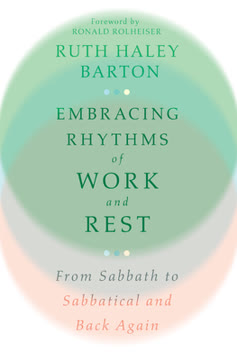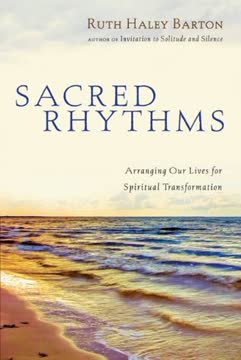Key Takeaways
1. Sabbath is a Divine Gift for Human Flourishing
Sabbath is the most precious present humankind has received from the treasure house of God.
God's original rhythm. The concept of Sabbath originates with God, who, after six days of creation, ceased work on the seventh, creating "rest" (Hebrew menuha), which signifies tranquility, serenity, peace, and harmony. This divine pattern was later shared with humanity as the optimal way to live, not because God tired, but because the rhythm itself is inherently good and life-giving. It's an invitation to participate in God's very nature.
Beyond a suggestion. Sabbath is more than a lifestyle choice; it's a spiritual precept embedded in the created order, a means of grace that allows us to partake in the divine nature. When we embrace this rhythm, we open channels for God to impart something of God's self, enabling us to become conduits of God's nature to the world. It's a sanctuary in time, already created, waiting for us to enter.
A personal wake-up. The author's own journey to Sabbath began with resistance, viewing it as legalistic or impossible amidst a busy life. A biking accident served as a "wake-up call," forcing a confrontation with human limitations and the layers of exhaustion accumulated from overachieving. This led to a progression from daily moments of solitude to weekly Sabbath, and eventually, longer sabbatical seasons, revealing Sabbath as a literal life-saver.
2. Sabbath is an Act of Resistance and Liberation
If you aren’t resting, you are a slave to something.
Freedom from bondage. For the Israelites, Sabbath was the sign and lived reality of their liberation from Egyptian slavery, a system of relentless production under Pharaoh. God introduced Sabbath as a direct counter to this exploitation, reminding them, "I am the Lord your God who brought you out of the land of Egypt, out of the house of slavery." It was a radical act of resistance against a culture that valued them only for what they could produce.
Modern forms of slavery. Today, many are enslaved by relentless productivity, never-enough consumerism, and constant digital stimulation, leading to stress, anxiety, and a feeling of always being "on." Sabbath offers a path to freedom from this modern bondage, challenging both external cultural pressures and internal drivenness. It's a weekly practice of trusting God's provision rather than relying solely on our 24/7 striving.
The great equalizer. Sabbath was designed for all God's creatures, regardless of status—"you, or your son or daughter, or your male or female slave, or your ox or your donkey, or any of your livestock, or the resident alien in your towns." This radical equality ensures everyone receives the benefits of rest, challenging societal inequities that demand endless labor from the poor. It's a time to remember our true identity as free people, not defined by what we do, but by who we are in God.
3. Sabbath is a Communal Discipline, Not Just Private
You yourself are to speak to the Israelites: “You shall keep my sabbaths.”
A gift unopened. Many individuals struggle to embrace Sabbath alone, often because their communities, including churches, inadvertently work against it. The author notes the disappointment of finding church schedules filled with activities that preclude family rest, making it difficult to find even two hours for a shared meal on Sundays. Sabbath, by its very nature, is meant to be discovered and practiced in community, not in isolation.
Learning to trust together. God first instituted Sabbath in the context of community, guiding the Israelites to trust His provision through the daily gathering of manna and the double portion on the sixth day. This communal practice of ceasing labor and trusting God's care shaped their identity as a people. Moses, as their leader, was tasked with teaching and reiterating these practices, demonstrating that Sabbath-keeping requires intentional, collective effort.
Leadership's vital role. For a community to truly embrace Sabbath, it needs authentic leadership. Leaders must first establish their own sustainable rhythms, gaining the "inner authority" to guide others. Just as Moses was humbled by Jethro's observation of his unsustainable workload, leaders today must recognize their limits and share responsibilities, ensuring that their community's life supports, rather than undermines, this essential practice.
4. Unplugging from Technology is Essential for True Rest
Nothing is better for your computer or your body than a complete shutdown and restart. Each. Week.
A new form of bondage. In today's world, the biggest challenge to Sabbath is often our addiction to technology. Smartphones, with their constant notifications and endless content, create a pervasive sense of intrusion and interruption, making it nearly impossible to truly disconnect. This constant stimulation leads to deep exhaustion, anxiety, and even personality disorders, as our minds are perpetually engaged and our attention fragmented.
The silent disconnect. Studies show that the mere presence of a phone, even if silent, can alter conversations and diminish feelings of connection. We become hooked on dopamine jolts from likes and comments, prioritizing external validation over genuine presence. This digital drivenness prevents psychic rest, keeping us from the quiet needed to hear God or connect deeply with ourselves and others.
Embracing a "tech shabbat." To reclaim true rest, a "tech shabbat" is crucial. This involves intentionally unplugging from screens and devices, perhaps by placing them in a "sabbath box." Tiffany Shlain, a nonreligious Jew, describes the magic of her "24/6" practice: it slows time, increases laughter, improves sleep, strengthens relationships, and fosters deeper reflection, leading to a full weekly reset and greater productivity. Leaders must model this freedom to unplug, sharing responsibilities to ensure everyone can truly rest.
5. Sabbath is a Day of Delight, Gratitude, and Deep Presence
If you refrain from trampling the sabbath . . . if you call the sabbath a delight and the holy day of the LORD honorable . . . then you shall take delight in the LORD, and I will make you ride upon the heights.
More than just rest. Sabbath is not solely about ceasing work; it's about actively embracing delight and gratitude. The author describes "putzing"—reading for pleasure, cooking, walking, or engaging in spontaneous conversations—as a profound joy that reconnects her to her home and human self. Rabbi Heschel emphasizes that "comfort and pleasure are an integral part of the Sabbath observance," extending to both body and soul.
From exhaustion to worship. Often, we arrive at Sabbath exhausted, but by giving in to rest without guilt, gratitude naturally emerges. This gratitude for simple gifts—like good coffee or the presence of loved ones—can swell into delight and, inevitably, into worship. Sabbath also fosters neighborliness, slowing us down enough to genuinely connect with those around us, embodying Jesus's teaching that kindness and helping others are paramount.
Mending tattered lives. While Sabbath brings delight, it can also surface feelings of loss, emptiness, or unresolved pain, as distractions are removed. This is not a betrayal of Sabbath's purpose but an opportunity for "good grief"—to acknowledge, feel, and accept difficult realities in God's presence. This deep, often tearful, process leads to profound replenishment and "re-membering," allowing God to mend our tattered lives and restore us to interior peace.
6. Sabbath Adapts to Life's Seasons, Always Offering Renewal
Our Sabbath project grew out of a desire to see what would happen if, on one day out of seven, we stopped working, striving, and hurrying. The result of this experience was clarifying, expansive, freeing. It was also annoying, difficult and odd.
A flexible gift. Sabbath is a gift for all ages and stages of life, though its practice will look different depending on the season. It's crucial to be open to this flexibility rather than expecting a uniform experience. Whether in college, raising young children, caring for aging parents, or living alone, the core invitation to rest, trust, and delight remains, but its expression must be adapted to individual and family circumstances.
Family and caregiving. For families with children, Sabbath involves intentional choices, like opting out of traveling sports or creating shared activities that foster connection and rest. The author's daughter, Charity, reframed Sabbath as "a day for being," balancing individual needs with communal presence. In seasons of caregiving, Sabbath might mean discerning weekly how to find personal rest while also bringing a "Sabbath way of being" to vulnerable loved ones, sometimes relying on others for support.
Singleness and solitude. For single individuals, Sabbath affirms their completeness, offering unique opportunities for both communal connection and nourishing solitude. It's a chance to lean into one's "wiring," whether through unhurried meals with friends or solitary activities like nature walks, art, or uninterrupted naps. The key is to embrace the reality that Sabbath was created for everyone, providing permission to seek out forms of rest and renewal that are most helpful, without feeling incomplete or "less than."
7. Leaders Must Model Sabbath for a Community to Embrace It
The church’s primary social and psychological task is to help people manage their experienced dependency upon God in such a way that they are better able to care effectively for the world.
Leading by example. For a community to truly become a "Sabbath community," its leaders must first embody the practice themselves. The author recounts Pastor Dan's journey, who, facing deep exhaustion, first sought personal spiritual direction to establish his own consistent Sabbath rhythm. This personal transformation provided him with the "inner authority" to then share his experience and conviction with his leadership team and, eventually, the entire congregation.
Challenging the status quo. Introducing Sabbath-keeping often "messes with" a community's established priorities, schedules, and "sacred cows." Dan's church, for instance, had to grapple with whether to add a Saturday night service, which would undermine the staff's and volunteers' ability to observe Sabbath. Such moments require leaders to slow down, discern, and prioritize God's rhythms over strategic growth plans, demonstrating a deep commitment to the well-being of their people.
A unified vision. Cultivating a Sabbath community involves a series of intentional movements:
- Personal practice: Leaders establish their own mature Sabbath.
- Shared with leaders: Vulnerable sharing with boards/staff.
- Agreement: Seek unity on Sabbath as a core value.
- Cast vision: Preach, teach, and provide resources.
- Communal day: Plan a shared Sabbath experience.
- Debrief & forward: Reflect and adjust community schedules.
This process fosters a collective longing for a life that works, transcending differences and uniting people in a shared pursuit of God's rest.
8. Sabbatical Extends Sabbath into a Season of Profound Renewal
A sabbatical is an extension of weekly Sabbath rest. Taking leave to build up or renew your spirit may prevent you from leaving the ministry altogether before it’s God’s time for you to do so.
Beyond weekly rest. The author's personal experience of deep exhaustion, compounded by ministry crisis and caregiving, revealed that even a consistent weekly Sabbath was not enough. She needed a longer, more intentional period of rest—a sabbatical. This realization highlights that while Sabbath is foundational, there are seasons in life and ministry where accumulated weariness demands an extended time of disengagement and renewal.
Biblical roots, not academic. The word "sabbatical" literally means "of or pertaining to the Sabbath," rooted in biblical traditions like God's rest, the land lying fallow every seventh year (Leviticus 25:3-4), and the Jubilee Year. This contrasts sharply with the modern academic understanding of sabbatical as a time for achievement or "publish or perish." The true essence is a season for the "soil of our souls to lie fallow," to heal, receive, and experience new life through dormancy.
A gift from God. Sabbatical is a gift from a loving God, mediated by boards and congregations, intended for physical and spiritual renewal. It's not a luxury or an entitlement, but a necessary provision for long-term sustainability in demanding leadership roles. This understanding allows leaders to receive it gratefully, trusting that God "has the whole world in his hands" and can run things even in their absence, confronting ego and the compulsion to be indispensable.
9. Sabbatical is More Than a Vacation; It's Intentional Soul Care
A sabbatical is not a vacation. It is a different kind of work—it is a directed time of refreshment and restoration.
Intentionality over activity. While a sabbatical may include elements of vacation, it is fundamentally different. A vacation often involves sightseeing, travel, and activity, sometimes leaving one needing rest from the vacation itself. A sabbatical, by contrast, is a season of intentionality towards deep rest and addressing very personal needs, hopes, and desires, tailored to one's unique personality and life circumstances.
Planning for deep needs. Effective sabbatical planning involves a soulful process of getting in touch with one's deepest needs and longings, often with the help of a spiritual director. This includes:
- Deep rest: Allowing months for serotonin levels to replenish and for the body, mind, and soul to truly unwind.
- Delight: Reconnecting with "vital fragments of identity" through simple pleasures like cooking, gardening, or creative pursuits.
- Travel or stay home: Disconnecting from normal patterns, prioritizing rest over stimulation, whether near or far.
- Personality care: Structuring time to honor natural preferences (e.g., spontaneity for a "P" type, solitude for an introvert).
- Physical health: Scheduling medical appointments and focusing on bodily strengthening and care.
Beyond superficial wants. The author's own sabbatical, amidst a pandemic, focused on rest, replenishment, and delight, rather than lofty projects. She found profound joy in "putzing" around her home, reconnecting with simple gifts, and allowing God's rest to seep in. This intentional focus on soul care, rather than external achievement, proved to be more beneficial than any exotic trip, leading to a deeper sense of well-being and renewed vitality.
10. Sabbatical Requires Fierce Boundaries to Protect Its Purpose
Sabbatical is a precious, precious gift that doesn’t come around very often, so it needs boundaries to keep what is most important in, and what might be an interruption, distraction, or violation out.
Stewardship of the gift. Sabbatical is a sacred time that demands clear boundaries to protect its purpose of rest and renewal. Just as weekly Sabbath requires intentional exclusion of certain activities, sabbatical extends these boundaries to a longer period. The author's experience during the George Floyd protests highlighted the challenge of maintaining these boundaries, wrestling with the impulse to engage publicly versus honoring the commitment to dormancy.
Ceasing work completely. Effective boundaries for sabbatical include:
- Clear start/end: Rituals to mark official disengagement and reentry.
- Delegation: Thoroughly planning who covers all responsibilities (preaching, administration, pastoral care).
- Limited contact: Providing a very short list of emergency-only contacts, and empowering others to handle routine matters.
- No work-related activities: Avoiding anything that pulls one back into ministry mode, even if it feels important or relevant.
This requires trust in the community and humility in the leader, allowing others to step up and practice the "priesthood of all believers."
Taming technology and relationships. Technology, with its constant connectivity, poses a significant threat to sabbatical rest. Unplugging from work email (with an "out of office" message) and even using a separate personal phone number for close contacts is crucial. Similarly, relational boundaries are vital: limiting contact with draining relationships and intentionally investing in life-giving family and friends. This creates a "cocoon"—a protected space for the soul to disintegrate from old patterns and reintegrate into a renewed self, safe from external onslaughts.
11. Sabbatical Offers Unique Spiritual Opportunities for Deepening
Free at last! Free to think critically, to feel deeply, and to pray as never before. Free to write about the many experiences that I have stored up in my heart and mind during the last nine years.
Beyond the "push-pull." Sabbatical provides an expansive spiritual possibility, a unique time to move beyond the "push-pull phenomenon" of wanting rest but being addicted to busyness. It allows for desires and intentions to flourish that are often suppressed in daily life. This includes deepening existing spiritual practices like Centering Prayer or lectio divina, or exploring new ones with intentionality to connect with God.
Attending to the inner life. Sabbatical is an ideal time for focused spiritual direction and therapy, offering space to process deep-seated issues, heal wounds, and gain psychological and spiritual insights. The author found profound rest in grieving family dynamics and laying down lifelong burdens, realizing that this "good grief" led to deeper peace and freedom. This intentional inner work, unburdened by immediate work demands, allows for true soul restoration.
Hiddenness and discernment. Sabbatical offers the luxury of "writing for our own soul's sake"—journaling, art, or reflection without pressure to publish or perform. It's a time for hiddenness, allowing insights to incubate and percolate. It also provides space for discernment, "resting with questions" about one's calling and future, trusting God's timing rather than forcing answers. This deep engagement with self and God, unhindered by external pressures, leads to profound personal and spiritual growth.
12. Rest is the Path to Being Saved and Finding True Strength
Rest in not the reward of our liberation, nor something we lay hold of once we are free. It is the path that delivers us there.
Sabbath keeps us. The profound truth, "More than Israel has kept Shabbat, Shabbat has kept Israel," resonates deeply with the author. Even when imperfectly observed, the promise and principles of Sabbath and sabbatical have protected her from the relentless treadmill of stress and exhaustion. It's God's way of showing us we are allowed to stop and how to do so, offering a reprieve for our minds, emotions, and spirits.
Isaiah's ancient wisdom. Isaiah 30:15 declares, "In returning and rest you shall be saved; in quietness and in trust shall be your strength." This verse, in context, highlights the obstacles to rest that are eerily similar to our own:
- Plans not God's: Pursuing initiatives without divine counsel, leading to unsustainable busyness.
- Alliances against God's will: Aligning with ventures that demand 24/7 availability, sacrificing rest.
- Seeking refuge in "Pharaoh": Returning to old patterns of productivity for security, rather than trusting God's provision.
- Avoiding unsettling truths: Shutting down voices, including God's, that challenge our unsustainable ways.
A deeper knowing. When we rest from the noise, busyness, and drivenness, God impresses a deeper knowing on our souls—guidance, challenges, affirmations, and a profound sense of being loved. This practice of returning and resting is a powerful antidote to living in illusion, fostering quietness, trust, peace, contentment, and gratitude. It's a "sweet surrender" where we find ourselves in God, week by week, until this steady rhythm carries us to the shores of eternal rest.
Last updated:
Review Summary
Embracing Rhythms of Work and Rest is highly praised for its practical approach to implementing Sabbath practices and sabbaticals. Readers appreciate Barton's personal experiences, biblical insights, and practical suggestions for individuals and communities. The book is particularly relevant for church leaders but also applicable to laypeople. Some reviewers found the sabbatical section less relevant, while others appreciated the comprehensive coverage. Overall, the book is seen as a timely and valuable resource for those seeking to establish healthier rhythms of work and rest in their lives.
Similar Books
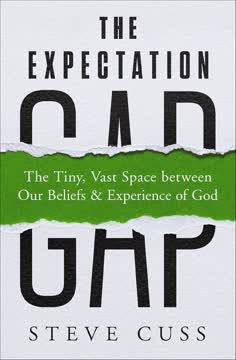


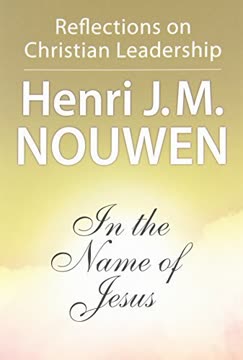


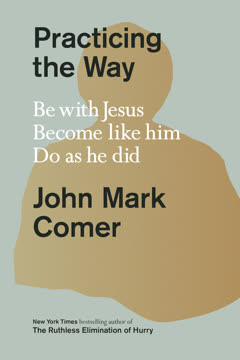
Download PDF
Download EPUB
.epub digital book format is ideal for reading ebooks on phones, tablets, and e-readers.
